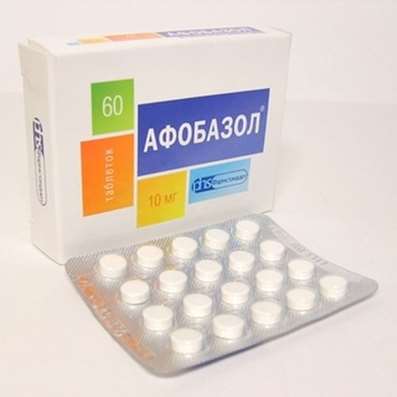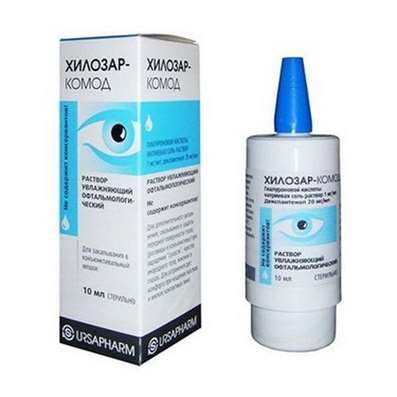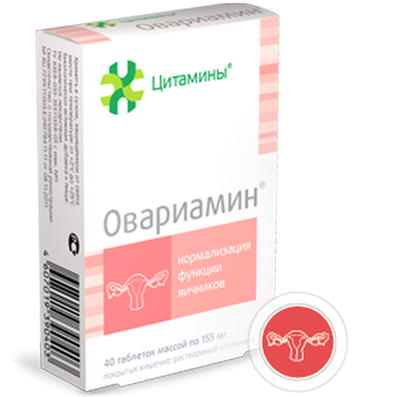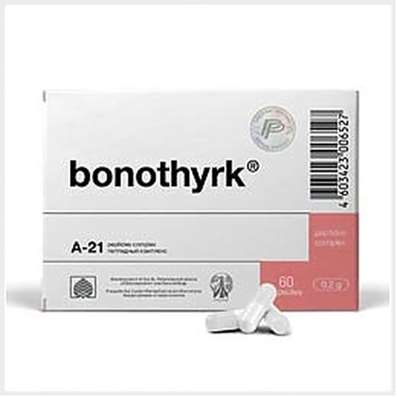Instruction for use: Rinsulin NPH
I want this, give me price
Active substance: Insulin-isophan [human biosynthetic]
ATX Code A10AC01 Human insulin
Pharmacological group
Hypoglycemic agent - insulin of average duration of action [Insulins]
Nosological classification (ICD-10)
E10 Insulin-dependent diabetes mellitus
Decompensation of carbohydrate metabolism, Diabetes mellitus, Diabetes insulin sugar, Diabetes mellitus type 1, Diabetic ketoacidosis, Insulin-dependent diabetes, Insulin-dependent diabetes mellitus, Coma hyperosmolar non-ketoacidotic, Labile form of diabetes mellitus, Violation of carbohydrate metabolism, Type 1 diabetes mellitus, Type I diabetes mellitus, Insulin-dependent diabetes mellitus, Type 1 diabetes mellitus
E11 Non-insulin-dependent diabetes mellitus
Acetonuric diabetes, Decompensation of carbohydrate metabolism, Diabetes insulin-independent sugar, Diabetes sugar type 2, Type 2 Diabetes, Non-insulin-dependent diabetes, Non-insulin dependent diabetes mellitus, Non-insulin-dependent diabetes mellitus, Insulin resistance, Insulin resistant diabetes mellitus, Coma lactobacillus diabetic, Violation of carbohydrate metabolism, Type 2 diabetes mellitus, Diabetes mellitus type II, Diabetes mellitus in adulthood, Diabetes mellitus in old age, Diabetes insulin-independent, Diabetes mellitus type 2, Sugar insulin-independent diabetes type II
O24 Diabetes mellitus during pregnancy
Pregnancy in diabetes mellitus, Diabetes mellitus type 2 in pregnant women
Composition
Suspension for subcutaneous administration 1 ml
active substance:
Human insulin 100 IU
Auxiliary substances: Protamine sulfate - 0.34 mg; Metacresol 1.6 mg; Phenol crystalline - 0.65 mg; Glycerol - 16 mg; Sodium hydrogen phosphate dihydrate 2.25 mg; Water for injection - up to 1 ml
To the beginning ^
Description of dosage form
A suspension of white color. When standing, the slurry settles. The liquid above the precipitate is clear, colorless or almost colorless. The precipitate is easily resuspended by gentle shaking.
Characteristic
Rinsulin® NPH is a human insulin obtained using recombinant DNA technology (deoxyribonucleic acid).
pharmachologic effect
Pharmacological action - hypoglycemic.
Pharmacodynamics
Insulin of average duration of action. Interacts with a specific receptor of the outer cytoplasmic cell membrane and forms an insulin-receptor complex that stimulates intracellular processes, incl. (Including) the synthesis of a number of key enzymes (hexokinase, pyruvate kinase, glycogen synthetase). Reducing blood glucose is due to increased intracellular transport, increased absorption and assimilation by tissues, stimulation of lipogenesis, glycogenesis, a decrease in the rate of glucose production by the liver.
The duration of action of insulin preparations is mainly due to the rate of absorption, which depends on several factors (for example, the dose, method and site of administration), and therefore the profile of insulin activity is subject to significant fluctuations in both individuals and in the same person.
On average, after subcutaneous administration, Rinsulin® NPH begins to function after 1.5 hours, the maximum effect develops between 4 and 12 hours, the duration of the action is up to 24 hours.
Pharmacokinetics
Completeness of absorption and the beginning of the effect of insulin depends on the place of administration (abdomen, thigh, buttocks), the dose (volume of insulin administered), the concentration of insulin in the preparation, etc. Distributed in tissues unevenly; Does not penetrate the placental barrier and into breast milk. It is destroyed by insulinase mainly in the liver and kidneys. It is excreted by the kidneys (30-80%).
Indications
Diabetes mellitus type 1;
Type 2 diabetes mellitus: the stage of resistance to oral hypoglycemic agents, partial resistance to these drugs (with combined therapy), intercurrent diseases;
Diabetes mellitus type 2 in pregnant women.
Contraindications
Increased individual sensitivity to insulin or any of the components of the drug;
Hypoglycemia.
pregnancy and lactation
There are no restrictions on the treatment of diabetes mellitus with insulin during pregnancy. Insulin does not penetrate the placental barrier. When planning pregnancy and during it, it is necessary to intensify the treatment of diabetes. The need for insulin usually decreases in the first trimester of pregnancy and gradually rises in the II and III trimesters. During and immediately after delivery, the need for insulin can dramatically decrease. Shortly after birth, the need for insulin quickly returns to the level that was before pregnancy.
There are no restrictions on the treatment of diabetes mellitus with insulin during breastfeeding. However, it may be necessary to reduce the dose of insulin, so careful monitoring is necessary for several months before the insulin needs stabilize.
Side effects
Due to the effect on carbohydrate metabolism: hypoglycemic conditions (pallor of the skin, increased sweating, palpitations, tremors, chills, hunger, agitation, paresthesia of the oral mucosa, weakness, headache, dizziness, decreased visual acuity). Pronounced hypoglycemia can lead to the development of hypoglycemic coma.
Allergic reactions: skin rash, Quincke's edema, anaphylactic shock.
Local reactions: hyperemia, swelling and itching at the injection site, with prolonged use - lipodystrophy at the injection site.
Other: swelling, transient decreases in visual acuity (usually at the beginning of therapy).
If the patient noted the development of hypoglycemia or had an episode of loss of consciousness, he should immediately inform the doctor about it.
If any other side effects, not described above, are identified, the patient should also consult a doctor.
Interaction
There are a number of drugs (medicines) that affect the need for insulin. The hypoglycemic action of insulin enhances oral hypoglycemic drugs, MAO inhibitors, angiotensin converting enzyme inhibitors, carbonic anhydrase inhibitors, nonselective beta-adrenoblockers, bromocriptine, octreotide, sulfonamides, anabolic steroids, tetracyclines, clofibrate, ketoconazole, mebendazole, pyridoxine, theophylline, Cyclophosphamide, fenfluramine, lithium preparations, preparations containing ethanol.
Hypoglycemic action of insulin weakens glucagon, somatropin, estrogens, oral contraceptives, glucocorticosteroids, iodine-containing thyroid hormones, thiazide diuretics, loop diuretics, heparin, tricyclic antidepressants, sympathomimetics, danazol, clonidine, epinephrine, H1-histamine receptor blockers, CCB, diazoxide, morphine, Phenytoin, nicotine. Under the influence of reserpine and salicylates, both weakening and enhancement of the action of the drug are possible.
Dosing and Administration
Subcutaneously
The dose of the drug is determined by the doctor individually in each case, based on the concentration of glucose in the blood. On average, the daily dose of the drug ranges from 0.5 to 1 IU / kg body weight (depends on the individual characteristics of the patient and the concentration of blood glucose).
Contraindicated iv in (intravenously) administration of Rinsulin® NPH.
The temperature of the injected insulin should be at room temperature.
Usually the drug is injected into the thigh. Injections can also be made in the anterior abdominal wall, buttock or in the shoulder region in the projection of the deltoid muscle. It is necessary to change the injection site within the anatomical area to prevent the development of lipodystrophy. With subcutaneous administration of insulin, care must be taken so that when injected do not enter the blood vessel. After injection, do not massage the injection site. Patients should be trained in the proper use of the insulin delivery device.
Rinsulin® NPH cartridges should be rolled between the palms horizontally 10 times before use and shaken to resuspend insulin until it becomes a homogeneous cloudy liquid or milk. Do not allow the appearance of foam, which may interfere with the correct dose set.
Cartridges should be carefully checked. Do not use insulin if it has flakes after mixing, if solid white particles stick to the bottom or walls of the cartridge, giving it the appearance of frozen.
The device of cartridges does not allow to mix their contents with other insulins directly in the cartridge. Cartridges are not intended to be refilled.
When using cartridges with a reusable syringe pen, follow the manufacturer's instructions for refilling the cartridge in the syringe pen and attaching the needle. The drug should be administered in accordance with the manufacturer's instructions for the syringe pen.
After insertion, it is necessary to unscrew the needle using the outer cap of the needle and immediately destroy it safely. Removing the needle immediately after injection provides sterility, prevents leakage, air ingress and possible clogging of the needle. Then put the cap on the handle.
When using multi-dose disposable syringes, stir Rinsulin® NPX suspension in a syringe pen immediately before use. The correctly mixed suspension should be uniformly white and cloudy.
Rinsulin® NPH in the syringe pen can not be used if it has been frozen.
When using pre-filled multi-dose disposable syringe pens for multiple injections, before using for the first time, remove the syringe pen from the refrigerator and allow the drug to reach room temperature. It is necessary to follow the exact instructions of the instructions for using the syringe-pen supplied with the drug.
Rinsulin® NPH in the syringe pen and needle are for individual use only. Do not refill the syringe pen cartridge.
Needles should not be reused. To protect from light, the syringe pen should be closed with a cap. Do not store the used syringe pen in the refrigerator. The drug should be stored at room temperature (15 to 25 ° C) for no longer than 28 days.
Using cartridges using reusable syringes
Cartridges with Rinsulin® NPH can be used with a multi-use syringe pen:
- syringe pen Autopen Classic (Autopen Classic 3 ml 1 Unit (1-21 units) AN3810, Autopen Classic 3 ml 2 Unit (2-42 units) AN3800) manufactured by Owen Mumford Ltd., United Kingdom;
- pen injectors for the administration of insulin HumaPen® Ergo II and HumaPen® Luxe manufactured by Eli Lilly and Company, USA;
- syringe pen Optipen® Pro 1 manufactured by Aventis Pharma Deutschland Gmbh, Germany;
- Syringe-pen BiomatikPen® manufactured by Ipsomed AG, Switzerland.
It is necessary to follow the instructions of the instructions for the use of the syringe pens provided by the manufacturers.
Overdose
Symptoms: hypoglycemia may develop.
Treatment: mild hypoglycemia, the patient can eliminate himself by taking sugar or carbohydrate-rich foods inside. Therefore, patients with diabetes are encouraged to always carry sugar, sweets, cookies or sweet fruit juice.
In severe cases, if the patient loses consciousness, IV / IV (intravenously) is administered a 40% solution of dextrose (glucose); In / m (intramuscularly), subcutaneously (subcutaneously), iv (intravenously) - glucagon. After restoration of consciousness the patient is recommended to take food rich in carbohydrates, to prevent the repeated development of hypoglycemia.
special instructions
Do not apply the drug, if after shaking the suspension does not turn white and evenly cloudy.
On the background of insulin therapy, a constant control of the concentration of glucose in the blood is necessary.
The causes of hypoglycemia in addition to an overdose of insulin may include: drug substitution, skipping meals, vomiting, diarrhea, increased physical activity, diseases that reduce the need for insulin (liver and kidney function disorders, hypofunction of the adrenal cortex, pituitary gland or thyroid gland), injection site change, As well as interaction with other drugs.
The dose of insulin must be corrected in case of thyroid dysfunction, Addison's disease, hypopituitarism, liver and kidney dysfunction and diabetes mellitus in people over 65 years of age.
Correction of the dose of insulin may also be required if the patient increases the intensity of physical activity or changes the habitual diet.
Concomitant diseases, especially infections and conditions accompanied by fever, increase the need for insulin.
Transfer of the patient to a new type of insulin or an insulin preparation of another manufacturer should be performed under the supervision of a doctor.
Influence on the ability to drive vehicles and work with machinery. In connection with the primary appointment of insulin, a change in its type or in the presence of significant physical or mental stress, it is possible to disrupt the ability to drive vehicles or various mechanisms, as well as engage in other potentially dangerous activities requiring increased attention and speed of mental and motor reactions.
Form of issue
Suspension for subcutaneous administration, 100 IU / ml. For 3 ml of the drug in glass cartridges with rubber rubber plugs, rolled by combined caps of aluminum with a rubber disc. A glass bead with a polished surface is embedded in each cartridge.
1. 5 cartridges are placed in a contour mesh box made of PVC film and foil of aluminum printed lacquered. 1 contour squamut package is placed in a pack of cardboard.
2. Cartridge, mounted in a plastic multi-dose disposable syringe pen for multiple injections of Rinastra. Five pre-filled multi-dose disposable syringe pens for multiple injections of Rinastra with instructions for the use of the syringe-pen Rinastra are placed in a pack of cardboard.
Terms of leave from pharmacies
On prescription.
Storage conditions
In the dark place at a temperature of 2-8 ° C (do not freeze).
Keep out of the reach of children.
Shelf life
2 years.
Do not use after the expiry date printed on the package.

 Cart
Cart





